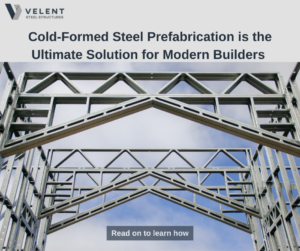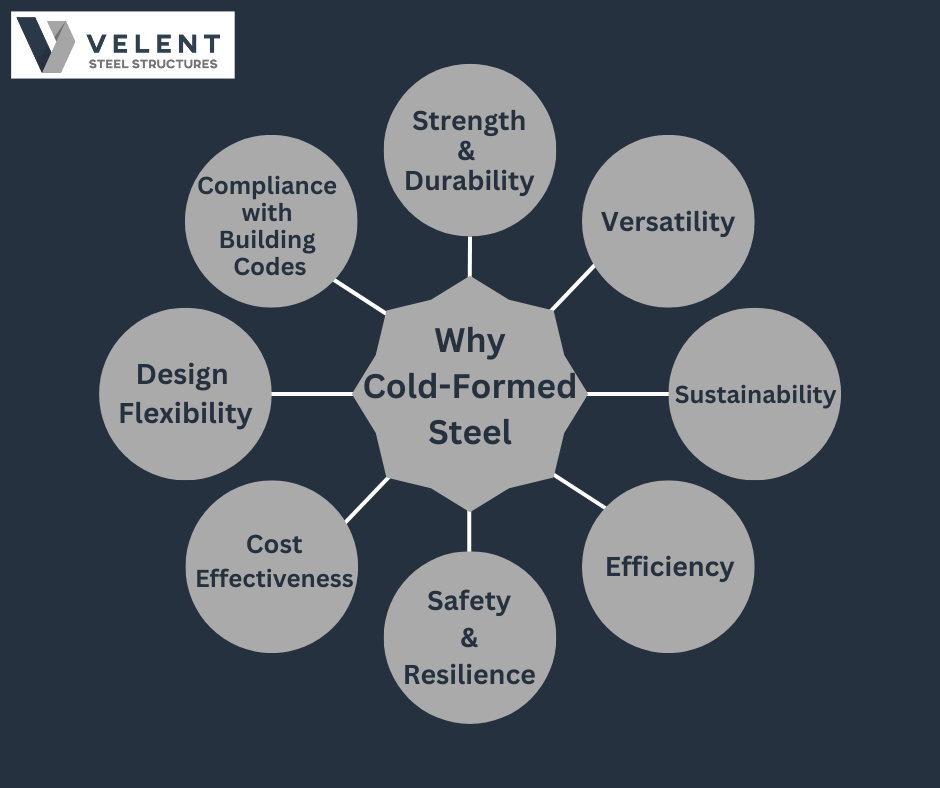The construction industry is rapidly evolving, with innovative materials and techniques reshaping how buildings are designed and assembled. One of the most groundbreaking advancements is Cold-Formed Steel (CFS) Prefabrication—a method that combines the strength and durability of steel with the efficiency of off-site manufacturing.
From high-rise buildings to modular homes, CFS prefabrication is a game-changer, offering unmatched speed, cost savings, and sustainability. But what exactly is it, and why is it gaining traction? Let’s dive in.

What is Cold-Formed Steel Prefabrication?
Cold-formed steel (CFS) is shaped at room temperature, making it lightweight yet incredibly strong. Prefabrication refers to constructing building components off-site in a controlled environment before assembling them at the final construction site. By combining these two techniques, the industry benefits from a streamlined, efficient, and cost-effective approach that reduces labor-intensive work on-site and ensures greater precision in construction.
Why CFS Prefabrication? The Key Advantages
1. Faster Construction Timelines
One of the biggest advantages of CFS prefabrication is speed. Since components are manufactured off-site, site preparation and construction can happen simultaneously, leading to significant time savings. Traditional construction projects can take months or even years, but with prefabrication, buildings can be completed up to 50% faster. Prefabricated CFS panels have already demonstrated their ability to reduce construction time dramatically, with some commercial projects seeing completion times cut from months to just weeks.
2. Superior Precision and Quality Control
Since CFS components are manufactured in a controlled environment, there is far less room for human error compared to traditional on-site construction. With the help of Computer-Aided Design (CAD) and Computer Numerical Control (CNC) machines, steel components are cut with millimeter precision, ensuring perfect fits and eliminating the need for costly on-site adjustments. This level of accuracy leads to higher-quality construction with fewer defects, resulting in stronger and more reliable structures.
3. Cost-Effective Construction
CFS prefabrication offers significant cost savings across multiple aspects of construction. By reducing material waste, improving labor efficiency, and cutting down on project timelines, overall costs are lowered. Additionally, since steel is resistant to issues like rot, pests, and corrosion, maintenance costs are also significantly reduced. The predictability of prefabrication further helps developers manage budgets more effectively without unexpected expenses.
4. Sustainability & Environmental Benefits
Cold-formed steel is one of the most sustainable materials available in construction. It is 100% recyclable, meaning it can be reused without degrading in quality, reducing the demand for raw materials. Unlike traditional construction methods, prefabrication significantly reduces on-site waste since materials are cut precisely in a controlled environment. Steel-framed buildings also contribute to better energy efficiency, as they allow for advanced insulation techniques that lower energy consumption in heating and cooling.
5. Strength, Durability, and Safety
CFS is not only strong but also incredibly durable, offering advantages that extend far beyond traditional building materials. It is naturally fire-resistant, unlike wood, and does not warp, rot, or attract pests. Additionally, its strength-to-weight ratio makes it an ideal material for structures in regions prone to earthquakes, hurricanes, or extreme weather conditions. This resilience ensures that buildings remain safe and stable over time, making CFS a preferred choice for architects and engineers.
6. Flexibility in Design & Applications
CFS prefabrication provides architects and designers with unparalleled flexibility. It allows for intricate, customized designs while maintaining structural integrity. Its adaptability makes it suitable for a wide range of applications, including residential homes, commercial buildings, modular hospitals, schools, hotels, and high-rise structures. Whether for traditional construction or modular units, CFS enables the creation of efficient, durable, and aesthetically appealing buildings.
Implementing CFS Prefabrication: What to Consider
1. Invest in BIM (Building Information Modeling)
To fully leverage the benefits of prefabrication, integrating Building Information Modeling (BIM) is essential. BIM allows architects, engineers, and construction teams to visualize the entire project in a digital format before construction begins. This reduces errors, enhances coordination, and ensures that prefabricated components fit seamlessly into the final structure.
2. Early Collaboration is Key
Prefabrication requires close coordination between architects, engineers, and contractors from the start of the project. When all stakeholders collaborate early, they can optimize designs for prefabrication, order materials efficiently, and ensure smooth project execution. Early involvement also helps prevent costly changes and delays later in the process.
3. Start Small, Then Scale
For companies new to prefabrication, starting with smaller sections of a project before fully adopting the method is a practical approach. By experimenting with smaller prefabricated elements first, teams can refine their techniques, troubleshoot any potential issues, and gain confidence before scaling up to full prefabricated structures.
Future of Cold-Formed Steel Prefabrication
With labor shortages, rising material costs, and increasing demand for sustainable building solutions, CFS prefabrication is set to become the standard in modern construction. As new technologies such as robotic automation and AI-driven design emerge, the process will become even more efficient, affordable, and scalable. These advancements will further enhance precision, reduce waste, and drive faster project completions, making CFS prefabrication an even more attractive solution for developers worldwide.
Conclusion
Cold-formed steel prefabrication is not just a trend—it’s the future of construction. Faster, stronger, and more sustainable, it addresses the biggest challenges in the industry today. Whether you’re a developer, architect, or builder, embracing this method can reduce costs, improve efficiency, and deliver superior results.
Are you ready to revolutionize your construction projects with CFS prefabrication? Get in touch today to explore the power of Cold-Formed Steel Prefabrication in transforming your construction projects—building faster, smarter, and more sustainably!


